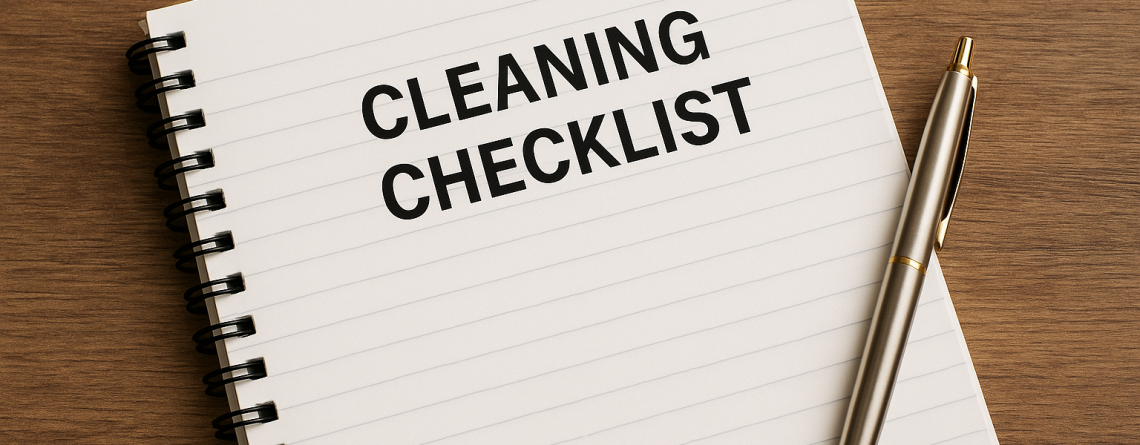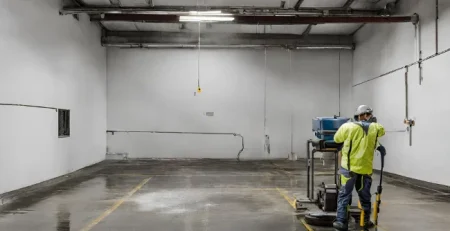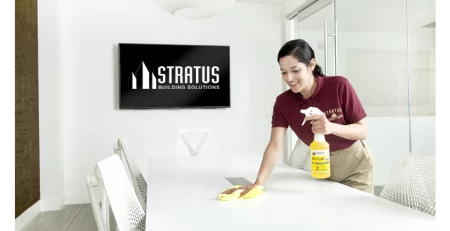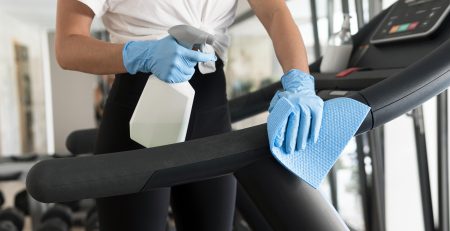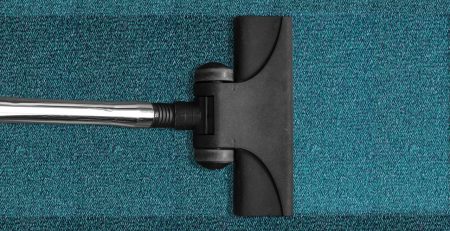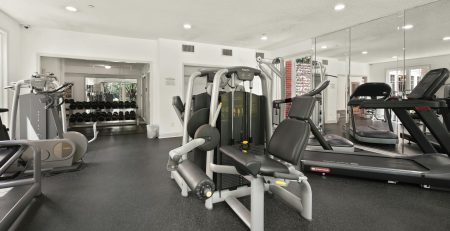Daycare centers are important for providing a place for children to spend the day while their parents are at work. Parents put a lot of trust in childcare facilities and expect their children to receive attentive care in a clean and safe environment.
One of the most important aspects of running a daycare is keeping the facility clean and hygienic. Children bring a lot of germs and bacteria into daycare centers that can spread very quickly as young kids share toys and snacks, put things in their mouths, and cough and sneeze openly. Daycare centers must regularly clean and sanitize their facilities to help prevent the spread of illnesses and provide the safest possible environment.
This guide will walk you through creating and implementing a comprehensive daycare cleaning checklist to maintain a safe and hygienic environment for both children and staff. A well-structured checklist ensures your facility stays on top of daily, weekly, and deep cleaning tasks, promoting cleanliness and peace of mind for everyone involved.
You can also supplement your cleaning efforts by working with a professional like Stratus that provides commercial cleaning services for daycare centers, private schools and other facilities.
Daycare Cleaning Basics
Maintaining a clean daycare environment is essential for protecting the health and safety of young children, who are more vulnerable to germs and infections. Daily cleaning routines should include disinfecting high-touch surfaces like toys, tables, doorknobs, and bathroom fixtures, as well as frequent handwashing for both staff and children. Using child-safe, non-toxic cleaning products is crucial, and establishing a regular schedule for deep cleaning, such as sanitizing nap mats, carpets, and play areas, helps prevent the spread of illness and creates a welcoming, hygienic space for kids to thrive.
It is important for daycare cleaning to be done regularly and efficiently to help maintain a safe environment. The following tips will help make your cleaning efforts more effective:
- Color-coded cloths: Use different colored cleaning cloths for each space within the facility, such as yellow cloths for the kitchen, blue cloths for the bathroom and changing stations, and red cloths for classrooms and play areas. This helps avoid confusion and prevent cross contamination.
- Label cleaning products for each area: Different areas require specific cleaning products for the best results. To ensure proper use, label each product according to its designated area. This helps prevent harsh chemicals from being used inappropriately, such as on children’s toys, while reserving them for spaces like the kitchen or bathroom where stronger cleaners are needed. Always follow the instructions when using disinfectants.
- Regularly order cleaning supplies: Maintaining a steady supply of cleaning products and equipment helps ensure consistent cleaning of the daycare facility. Set up recurring orders to avoid running out of cleaning products, disinfectants, sanitizers, and other cleaning supplies.
- Establish hand washing and sanitizing stations: Daycare staff are constantly exposed to germs from changing diapers, feeding children, and wiping their faces. Encouraging regular handwashing and sanitizing is one of the most effective ways to prevent the spread of germs. Set up handwashing stations in the daycare and encourage staff to wash their hands between activities and when transitioning between areas of the facility.
- Rotate cleaning responsibilities: Cleaning tasks should be assigned to each member of the staff to ensure that all daily, weekly, and monthly tasks are completed. You should also rotate cleaning responsibilities to ensure effective cleaning.
Creating a Daily Cleaning Checklist
Certain areas, surfaces, and objects within a daycare center require daily cleaning to ensure a hygienic environment. High-touch points like doorknobs should be disinfected daily, while surfaces used for eating or diaper changing must be cleaned thoroughly after every use.
When designing a daily cleaning checklist, be sure to include all areas and items that need regular cleaning, along with other tasks that should be completed each day. Assign responsibilities to staff members and have them initial the checklist to confirm the completion of each task. This ensures accountability and helps maintain a safe, sanitary space for everyone.
The following are surfaces that should be cleaned each day:
- Countertops
- Children’s toys
- Doorknobs and cabinet doorknobs
- Floors
- Toilets and sinks
- Blankets used for naps
- Drinking fountains
The following are surfaces that should be cleaned and sanitized after every use:
- Food prep areas
- Tables used for eating
- Highchairs before and after eating
- Changing stations
- Potty chairs
- Isolation areas
- Kitchen sinks
- Dishes and utensils
- Toys children have put in their mouths
Daily cleaning checklists should also include the following cleaning tasks:
- Cleaning liquid spills
- Vacuuming carpeting and area rugs
- Cleaning the refrigerator
- Emptying garbage cans
- Washing kitchen floors
- Dusting furniture
- Opening windows to circulate fresh air
- Cleaning storage rooms
Weekly Cleaning Checklist
Some surfaces and objects do not have to be cleaned as often as those listed above, but they should be cleaned, sanitized, and disinfected at least once each week. Your weekly cleaning checklist should include the following:
- Refrigerators
- Garbage cans
- Walls
- Books and bookshelves
- Nap mats and blankets
- Cribs and bedding
- Toys for older children
- Art rooms and supplies
Monthly/ Quarterly Cleaning
There are some areas and surfaces in daycare centers that can be cleaned each month or on a quarterly basis. You should include the following on your monthly/ quarterly cleaning checklist:
- Furniture
- Curtains and blinds
- Windowsills and baseboards
- Closets, storage containers, and shelves
- Plumbing fixtures, including checking for leaks
- Deep cleaning carpeting at least twice each year
Cleaning Supplies and Equipment
Daycare centers must stay stocked up on the cleaning supplies and equipment needed to keep the facility clean and sanitary. You should put a plan in place to continuously replenish cleaning supplies so that you never run out of a specific item that could cause delays in the cleaning.
Make sure your daycare center always has the following cleaning supplies and equipment:
- Hand sanitizer: Hand sanitizer is very important to have available in daycare centers as children put things in their mouths and spread germs to everything they touch. Put hand sanitizer throughout the facility and encourage staff to use it regularly to help prevent the spread of germs.
- Wet wipes: Wet wipes are ideal for cleaning sticky surfaces, small spills, and children’s hands. Keep wet wipes handy in play areas, eating areas, and the kitchen.
- Paper towels: Daycare centers should keep plenty of paper towels on hand to clean children’s hands and mouth, clean up small spills, and wipe down surfaces with cleaning solutions. It is common for daycare centers to go through 2-3 rolls of paper towels each day.
- Disinfectant spray: Disinfectant sprays can be used in the presence of children to treat surfaces and objects. Make sure the specific disinfectant you use is child-safe and always follow the product’s instructions when using it.
- Bleach: Bleach can be used to remove stains and disinfect surfaces and objects, but it can also be harsh on a child’s skin. It is best to use bleach for cleaning when children are not present and to rinse surfaces and objects that were cleaned with bleach.
- Dishwasher: Daycare centers should consider installing a dishwasher because these appliances make cleaning dishes a lot faster and more efficient than hand washing. They also prevent dirty dishes from piling up in the sink which can cause bacteria growth.
- Vacuum cleaner: All daycare centers should have a vacuum cleaner to keep up with cleaning carpets and area rugs.
Cleaning Products for Daycare Centers
In a daycare center, the best cleaning products are effective at killing germs yet safe for use around children. Here’s a list of highly recommended items:
- Disinfectant wipes and sprays: Use EPA-registered disinfectants that are labeled as safe for use in childcare settings. Fragrance-free or low-odor options reduce allergic reactions.
- All-purpose cleaner: All-purpose cleaners can be used for general surface cleaning including tables, counters, and play areas. Look for non-toxic, biodegradable cleaning products.
- Child-safe floor cleaner: Choose pH-neutral cleaners for mopping floors to avoid residue and harsh chemicals.
- Toy sanitizers: Use a baby-safe disinfectant for toys and items kids put in their mouths. You can also use a dishwasher or soak toys in a diluted bleach solution to sanitize them, but make sure to rinse thoroughly.
- Laundry detergent: Use hypoallergenic, fragrance-free detergent for washing bedding, blankets, and soft toys
- Green cleaning products: There should be a green option for every type of cleaning product that is low fragrance and free of VOCs, toxins, and other harmful substances. Look for products that have certifications from Green Seal, the EPA, EcoLogo, or other institutions. At Stratus, we provide green cleaning services for daycare centers using our Green Seal certified cleaning products.
Make sure to follow these tips when using any cleaning products in your daycare facility:
- Always follow manufacturer instructions for dilution and contact time.
- Ensure proper ventilation when using any cleaning chemicals.
- Store all cleaning supplies securely out of children’s reach.
Having these products on hand, combined with consistent cleaning protocols, helps keep the daycare environment safe and healthy for everyone.
Deep Cleaning Procedures
Deep cleaning in a daycare center goes beyond daily maintenance and focuses on thoroughly sanitizing all areas to prevent illness and maintain a safe, hygienic environment for children and staff. Here’s a step-by-step guide for effective deep cleaning procedures:
- Plan and schedule regular deep cleans: Perform deep cleaning monthly or bi-weekly, and always after any outbreak of illness. Always schedule deep cleaning during off hours or weekends to allow for proper drying and ventilation.
- Declutter and remove items: Clear surfaces, shelves, and floors of toys, books, linens, and other items. Bag and set aside items that need separate washing or disinfecting.
- Clean and disinfect toys and learning materials: Soak hard toys in warm, soapy water and scrub, rinse, and disinfect with a child-safe product or diluted bleach solution (1 tbsp bleach per 1 gallon water), then allow them to air dry. Launder soft toys with hypoallergenic detergent and dry thoroughly. Discard any broken or non-cleanable toys.
- Sanitize all surfaces: Use an EPA-registered disinfectant to wipe down tables and chairs, shelves, light switches, door handles, drawer pulls, windowsills, baseboards, and other high-touch surfaces.
- Deep clean restrooms and changing areas: Scrub and disinfect toilets, sinks, faucets, counters, soap dispensers, changing tables, and the surrounding walls. Replace liners and sanitize diaper disposal units.
- Deep clean kitchen and food prep areas: Clean and disinfect counters, tables, sinks, cabinet handles, and appliances such as refrigerators, microwaves, and toasters. Sanitize dishware and utensils using hot water or a dishwasher.
- Sanitize sleeping areas: Launder all bedding, blankets, and nap mats and disinfect crib rails and cots, including frames and legs. You should also vacuum and spot-clean carpets and rugs.
- Clean floors thoroughly: Sweep and vacuum all floor areas, including under furniture. Mop the floors using a child-safe, neutral pH cleaner, especially in high-traffic zones like entryways and play areas. Spot-treat stains and sanitize corners and grout lines if needed.
- Ventilation and air quality: Open windows and doors to air out the space after deep cleaning. Change or clean air filters in HVAC systems regularly.
- Final check: Inspect the entire facility for missed areas and re-stock soap, paper towels, gloves, and other hygiene supplies. Document completed tasks and note any repairs or replacements needed.
By implementing thorough deep cleaning procedures, daycare centers help reduce the risk of illness outbreaks, maintain licensing compliance, and create a healthy, welcoming environment for children and staff alike.
Sanitizing and Disinfecting
An important part of keeping daycare centers clean is making sure that areas, surfaces, and items are properly sanitized and disinfected. While the terms “sanitizing” and “disinfecting” are often used interchangeably, they serve distinct purposes. Sanitizing reduces germs to safe, acceptable levels, while disinfecting goes a step further by eliminating germs altogether.
The various surfaces and objects found throughout a daycare facility must be properly cleaned and sanitized using the right products. Disinfectant sprays and wipes and commercial disinfectant solutions can be used on a variety of surfaces. A diluted bleach solution is also an effective disinfectant.
Hand Hygiene in Daycare
Hand hygiene is one of the most critical practices in daycare centers to prevent the spread of illness among children, staff, and families. Young children frequently touch their faces, toys, and each other, making daycares high-risk environments for transmitting germs. Proper handwashing significantly reduces the spread of bacteria and viruses like colds, flu, and stomach bugs, which are common in group care settings.
Teaching good hand hygiene, especially before meals, after using the bathroom, and after outdoor play, helps instill lifelong healthy habits in children. For caregivers, consistent handwashing protects not only their own health but also ensures a safer environment for everyone in the daycare.
Professional Daycare Cleaning Services from Stratus
Maintaining a clean and hygienic daycare environment is essential for the health, safety, and overall well-being of the children and staff. By implementing thorough daily, weekly, and deep cleaning routines, paired with proper sanitizing, disinfecting, and hand hygiene practices, daycare centers can effectively minimize the spread of illness and provide a space where children can thrive. With the right cleaning products, clear protocols, and a dedicated team, your facility can meet the highest standards of cleanliness and earn the trust of families who rely on your care.
If you are interested in working with a professional that can supplement your cleaning efforts or take over the cleaning of your daycare facility entirely, call our professionals at Stratus Palm Beach. We provide complete commercial cleaning services that includes daycare centers to help ensure that your facility is hygienic and safe for children and staff. Our professionals will create a tailored cleaning plan to accommodate the needs of your building, and we use advanced methods, equipment, and green cleaning products to ensure thorough and effective cleaning.
For more about our commercial cleaning services for daycare centers in the Palm Beach, FL area, call us at (561) 469-8795 or contact us online.
Daycare Cleaning FAQs
How often should toys be sanitized in a daycare setting?
In a daycare setting, toys should be sanitized as follows:
- Daily: Toys that are used by infants and toddlers or are frequently handled should be cleaned and sanitized at least once per day.
- After Each Use: Toys that children put in their mouths, or that become contaminated with bodily fluids (e.g., saliva, mucus), should be cleaned and sanitized immediately after use.
- Weekly: Toys that are used less frequently or by older children can be sanitized weekly, unless they become visibly dirty or contaminated.
- When Illness Occurs: During or after an outbreak of illness (e.g., flu, COVID-19, stomach bug), all toys should be thoroughly sanitized to prevent further spread.
Best Practices:
- Use child-safe, non-toxic disinfectants.
- Dishwasher-safe toys can be cleaned using a hot wash cycle.
- Soft toys should be machine washed regularly, especially those used by infants or shared among children.
What are the most commonly missed areas when cleaning a daycare?
When cleaning a daycare, certain areas are commonly overlooked but can harbor significant germs and bacteria. Here are the most commonly missed areas:
- Light switches and door handles:
These high-touch surfaces are frequently used but often skipped during routine cleaning. - Chair backs and legs:
Kids touch the backs and crawl under chairs, yet these parts are rarely disinfected. - Shelf edges and cubbies:
The outer and inner edges of storage units collect dust and germs but are easily forgotten. - Toys in storage bins:
While frequently used toys may get cleaned, those that sit in bins or on shelves are often missed, even if they still get handled. - Undersides of tables and chairs:
Children touch or rest items underneath tables, making these spots surprisingly germy. - Walls at child height:
Walls around play areas or cribs at kid-level accumulate handprints, sneezes, and spills. - Sink faucets and soap dispensers:
These are touched after messy activities or diaper changes and should be sanitized regularly. - Changing station sides and undersides:
The surface may be cleaned, but the sides, edges, and underneath are often neglected. - Fabric items like curtains and soft toys:
These can carry allergens and bacteria but are not always included in regular cleaning schedules. - HVAC vents and air filters:
Dust and allergens build up here and can affect air quality if not regularly cleaned or replaced.
How can staff be trained on proper daycare cleaning procedures?
Training daycare staff on proper cleaning procedures is essential for maintaining a safe and healthy environment. Here’s how to effectively train staff:
- Develop a Clear Cleaning Protocol
- Create detailed, written cleaning procedures for daily, weekly, and monthly tasks.
- Break them down by area (classrooms, restrooms, kitchen, etc.) and by task (disinfecting toys, sanitizing tables, etc.).
- Include information on what products to use and how to use them safely.
- Conduct Initial and Ongoing Training Sessions
- Provide hands-on training during onboarding and schedule refresher sessions quarterly or biannually.
- Use real scenarios and role-playing to demonstrate proper cleaning techniques and safety measures.
- Invite experts or cleaning professionals for workshops, especially after updates to health regulations.
- Demonstrate Proper Use of Cleaning Products
- Teach staff how to read labels and follow manufacturer instructions for dilution, application, and dwell time.
- Emphasize the difference between cleaning, sanitizing, and disinfecting.
- Provide Visual Aids and Checklists
- Post visual cleaning guides in key areas as reminders.
- Use color-coded charts for cloths and cleaning zones to prevent cross-contamination.
- Provide laminated checklists that staff can mark off daily.
- Incorporate Cleaning Into Daily Routines
- Assign and rotate cleaning duties among staff members to build shared responsibility.
- Ensure cleaning is not treated as an afterthought but as a core part of caregiving.
- Monitor and Offer Feedback
- Perform regular walkthroughs and inspections to ensure standards are met.
- Provide constructive feedback and additional training if necessary.
- Reinforce the Importance of Hygiene
- Explain how proper cleaning protects children, staff, and families.
- Connect cleaning practices to health outcomes, such as reducing illness outbreaks.
Is professional cleaning required for daycare centers, or can staff handle it?
Professional cleaning is not legally required for all daycare centers, but it is strongly recommended to supplement staff efforts, especially in high-traffic or high-risk areas. Here’s a breakdown of when each is appropriate:
Staff Can Handle:
- Daily cleaning tasks like wiping down tables, sanitizing toys, and tidying classrooms.
- Spot cleaning spills, disinfecting surfaces after meals or diaper changes.
- Basic restroom and kitchen maintenance during operating hours.
- Hand hygiene enforcement for staff and children.
Professional Cleaning Is Recommended For:
- Deep cleaning (monthly or quarterly), including carpets, ventilation, grout, and hard-to-reach areas.
- Post-illness outbreak disinfection to ensure thorough sanitization with commercial-grade products.
- Compliance with local health regulations, especially before inspections.
- Specialized tasks like floor waxing, upholstery cleaning, and mold/mildew treatment.
A hybrid approach is best: staff maintain day-to-day cleanliness while professional cleaners ensure the facility meets higher sanitation standards. This balance protects children’s health, meets licensing requirements, and gives parents greater peace of mind.

